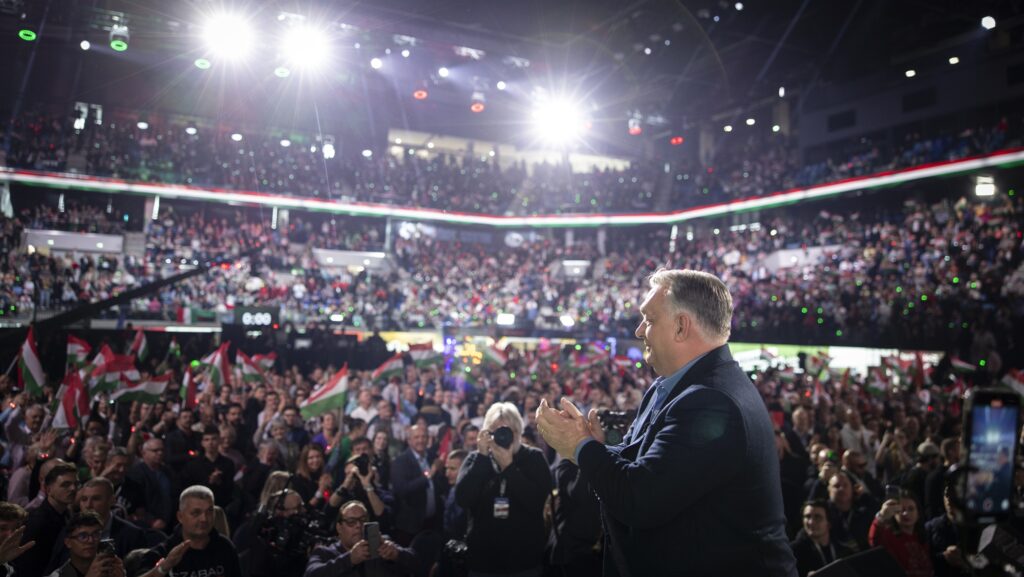The following is an adaptation of an article written by Ákos Péter Mernyei, a research fellow at the Europe Strategy Institute of the University of Public Service, originally published on the Five Minutes Europe blog of Ludovika.hu.
Last week, the ‘renewed version’ of the trade agreement between the European Union and Ukraine came into force. But what does this mean in practice? The amended agreement provides Ukraine with several long-term, rather than temporary, concessions, while the big question is what it will bring to Europe and whether European leaders had our interests in mind when concluding the agreement.
Since the start of the Russo–Ukrainian war, there have been daily reports on the sanctions packages that the European Union is imposing on Russia, those it is working on, and the financial support it is providing to Ukraine. However, less is said about the rules governing trade cooperation between the EU and Ukraine, which, although intended to protect European economic interests, may also be suitable for supporting Ukraine—to the detriment of European farmers.
The relevant regulatory framework is of fundamental political and economic importance, so it is worth reviewing it briefly. The roots of cooperation date back to the mid-2000s. Between 2007 and 2011 the EU negotiated and then signed an Association Agreement with Ukraine in 2014, which was intended to provide a legal framework for the country’s ‘European aspirations’. The international agreement also included the creation of a so-called Deep and Comprehensive Free Trade Area (DCFTA) (Article 25). The DCFTA introduced significant customs concessions in trade relations with Ukraine, making imports from Ukraine to the EU cheaper and thus creating fiercer competition for European farmers.
Following the outbreak of war, the EU announced further liberalization (suspension of existing tariffs and import quotas) beyond what was agreed in the agreement, which it implemented through unilateral measures to be reviewed annually. These unilateral measures are known as Autonomous Trade Measures (ATMs) and were originally introduced on a ‘temporary’ basis to open up several segments of the EU agricultural market to Ukrainian products (such as grain, corn, and dairy products). The ATMs first came into force in June 2022 but were extended by the Commission in 2023 and again in 2024, each time for another year. During the three one-year unilateral relief periods, the Commission decided (partly due to international trade law—WTO—rules) that it wanted to make the liberalized regime introduced towards Ukraine permanent, and in light of this, an agreement was reached with the Ukrainians during the summer.
The content of the amendment sparked a lively debate between Member States, as well as between them and the Commission. The significance of the issue beyond political considerations is clearly demonstrated by the fact that Poland and Slovakia joined Hungary in the debate, although this coalition was not sufficient in legal terms to prevent the agreement from being adopted. The Commission’s aim with the amendment was to further facilitate trade relations with Ukraine and thus help the Ukrainian economy through this trade policy instrument. In terms of content, the text represents a minor degree of further liberalization in certain sensitive sectors (such as sugar, poultry, eggs, flour, and honey), while it implements full market opening for other products, such as dairy products.
‘According to the Commission, the amendment does contain appropriate “safeguard clauses”…in the event of serious distortion in an EU market’
Yes, but the concessions granted to Ukraine, by their very nature, pose difficulties for the other side of the relationship, namely, Europe. The thing is that certain economically vulnerable sectors in the Member States (such as agriculture) could very easily suffer serious damage if the trade agreement with Ukraine does not adequately protect ‘domestic’ producers. This is especially acute in certain sectors where production within the EU is highly regulated and, at least in part because of this, they can only produce at significantly higher costs (see, for example, agriculture, due to the numerous agricultural market, environmental, and plant and animal health regulations). According to the Commission, the amendment does contain appropriate ‘safeguard clauses’ designed to guarantee rapid intervention in the event of serious distortion in an EU market as a result of liberalization.
However, several Member States and agricultural interest groups did not consider either the further, now indefinite market opening, or the protection discussed to be adequate (it is worth considering what concepts such as ‘rapid intervention’ and ‘serious distortion’ might mean in practice for individual farmers on the market), and argued strongly against the amendment. In Hungary, the Hungarian Farmers’ Societies and Cooperatives (MAGOSZ) and the Hungarian Chamber of Agriculture (NAK) also drew attention to the fact that the agreement could cause market disruption, pose food safety risks, and result in price dumping, which would seriously disadvantage Hungarian farmers already affected by drought. In addition, interest groups complained that no comprehensive impact assessment had been carried out prior to the amendment, which would have allowed the agricultural interests of the Member States to be considered sufficiently.
However, these arguments did not sway the Commission, which passed the amendment in the Council in mid-October, and it came into force at the end of that month (on 29 October). The proposal was discussed in a qualified majority decision-making procedure, so Hungary was unable to prevent it, even with the support of Poland and Slovakia. The three Member States that opposed the agreement therefore decided to maintain the trade protection measures they had unilaterally introduced last year in the interests of their economies. As a result, Ukraine has filed a complaint with the WTO against the parties concerned, including Hungary…
‘Ukraine has filed a complaint with the WTO against the parties concerned, including Hungary’
So, unfortunately, we are faced with what might be called a ‘standard setup’: a central goal designated by the Commission as being ‘in the European interest’, yet conflicting with the interests of the Member States—which naturally consist of those of their own farmers, producers, traders, and consumers. The Commission considered Ukraine’s support to be more important than the protests at the national and sectoral level in the Member States and therefore pushed through the amendment to the trade agreement. The Member States concerned are defending themselves as best they can: if the EU does not provide assistance, and if new problems arise from Brussels, then in the form of unilateral protective measures. Ukraine, which negotiated a favourable deal with the Commission over the heads of the Member States, now wants to force them to comply with the agreement, which is disadvantageous to them, before an international forum. Meanwhile, the Commission is considering whether to take action against the ‘rebellious’ Member States (and if so, only against Hungary or, for example, Poland) before the European Court of Justice, and whether to try to force them to end the protection they provide to their agriculture.
All this would certainly not help to achieve one thing: a stronger, more harmonious European Union that works for its citizens, if you will.
Related articles:
Click here to read the original article.







